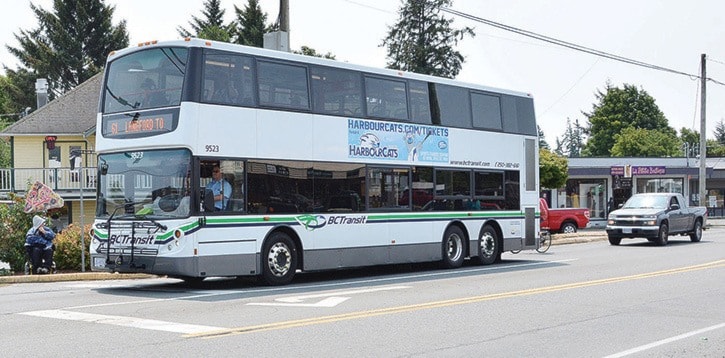A $1.63-million injection of provincial funding to the Greater Victoria Transit Commission will see an increase in transit operating hours, more buses and fewer wait times.
The commission will add 20,000 service hours (13,000 hours will preserve existing services and the other 7,000 to create a new service) and buy eight new buses.
Separate funding covers two new HandyDart buses and 4,000 hours in expanded service for people with mobility issues.
The $1.63-million is interim funding for the 2017-18 fiscal year, and comes weeks after the commission announced it would not expand routes or operating hours this year after the B.C. government refused to bring in a two-cent-a-litre increase in gas tax in the February provincial budget.
“It takes strong partnerships for public transit to be successful, and I appreciate the hard work of staff from B.C. Transit and the [Ministry of Transportation] to deliver a financial solution allowing much needed service expansion to proceed,” said Susan Brice, chair of the Victoria Regional Transit Commission, in a media release.
Most of the service increases will be seen in the West Shore and University of Victoria areas of Greater Victoria.
The transit commission is expected to approve new routes and schedules at its June meeting.
Sooke Mayor Maja Tait, a member of the transit commission, is pleased with the new funding, but said more still needs to be done.
“The difference on the $1.6 million is that this is just for this year. So, what do future years look like?” she asked.
Areas, like Sooke, have seen a huge demand for transit service in recent years. None of those routes will see an increase this time around.
“If you’re a Sooke resident and travelling to UVic or Interurban this is an improvement for those making that transfer, but in terms of basic Bus 61 to downtown or community bus service there would be no change,” Tait said.
Transit relies on bus fares, property taxes and gas taxes for two-thirds of its budget, with the province paying for about one-third. The 2017-18 budget has $128.5 million in spending, up from $120.6 million last year.
Fares were increased last April and brought in $2 million up to last February.
Tait has been a strong advocate of the gas tax, pointing out that it’s the most sustainable way to increase revenue with the least pain to local taxpayers.
“If transit increased property taxes by one per cent it generates around $250,000 in additional funding for transit, but a one-cent increase in gas tax triggers more than $3 million. How can you possibly match that through property taxes or fares?” she said.
